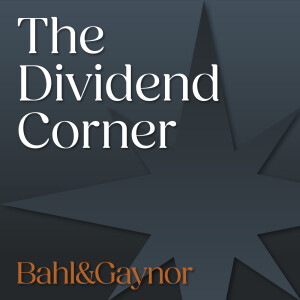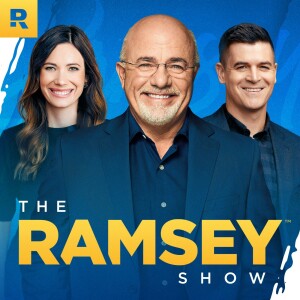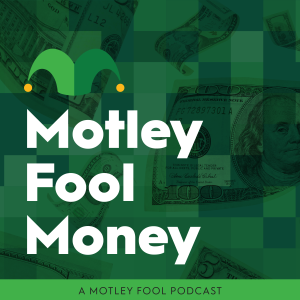

Nicholas Puncer: Hi, I'm Nick Puncer, Portfolio Manager and member of Bahl & Gaynor's Investment Committee. Welcome to the Dividend Corner It's August 2025, and for this quarter's mid-quarter update, fresh off of earnings season, we're going to be speaking with fellow Investment Committee member and Bahl & Gaynor's Chief Investment Officer, Pete Kwiatkowski. Thanks for your time today, Pete.
Pete Kwiatkowski: Thanks, Nick. It's great to be here.
Nicholas Puncer: Pete, one could argue that markets today look much the way they did at the end of 2024. They're concentrated, got pretty high valuations, and perhaps the market's vulnerable to small changes in the growth narrative. But investors have been handsomely rewarded for being invested in equities over the last 15 plus years. Now, as equity investors ourselves here at Bahl & Gaynor we don't want to come off as bearish on equities, but maybe a good place to start is talking about the role of risk management and how we manage our strategies given the market backdrop.
Pete Kwiatkowski: Yeah Nick, it's a great place to start since paying attention is at the center of our investment process. Our process is designed to put downside protection potential along with inflation beating dividend growth at the center of our portfolio construction and management. We want downside protection potential to be a perennial characteristic of how we invest. Investment environments can change so quickly as we have seen. So, I believe the emphasis that we place on risk as a firm differentiates us. And while equities, as you said, they've done a tremendous job generating wealth for investors over the long run, our timing for this discussion, I feel, is a bit more precarious than usual.
If you look since 1999 or mid 1999, over the last 25 plus years, there are only handful of observations where we've seen forward PEs greater than what we've had today, 22 times earnings. And of those handful of observations, all of them have produced negative forward five year returns.
So what we saw in the first quarter culminating with the early April drawdown, as well as the recent volatility around the July non-farm payroll release, those were good real world signals that we were appropriately positioned across our strategies to deliver the downside protection potential that we target if you look at how we performed. This primary focus on risk has led our strategies historically having a risk profile with lower volatility than their respective benchmarks.
We feel that allows our clients to potentially consider a higher allocation equities in their portfolios than they otherwise might be comfortable with. And we feel, as you know, this can help our clients build more wealth over the long run. It's a good starting point and good context from a risk perspective.
Nicholas Puncer: I wonder if we can double click on that risk element and talk a little bit about how we incorporate risk management specifically into our approach, maybe from a company selection or a portfolio construction standpoint.
Pete Kwiatkowski: Yeah, sure, so, I think again, I'll double click on the point that we most when you think about stocks, you just think about returns, right? So, we spent from the very beginning when we're looking at stocks, and then how the stocks roll up to the sector and the portfolio, we pay very close attention to how that stock performs when the market goes down or downside capture. We're always looking at volatility and beta.
So we have to respect risk first and not just chase returns, which as you know today is extremely tempting. So, what we're looking for within our dividend growth universe, we aim to own the best companies that meet our requirements within that. And while we're keeping portfolio risk within our constraints. So, you know, one big point within that is a stable company that leads its peer group and possesses competitive advantages is something that we would love to invest in. And the main thing there is that those types of companies tend to defend very well when the market declines. To us, that's as valuable as fast-growing companies can be.
Nicholas Puncer: Yeah, absolutely. Yeah. I'm reminded of a quip that think Warren Buffett made where if you have $100 and you lose 50%, it's really unfortunate because you need 100 % return to get back to even. But, if with that same hundred dollars, maybe you lose 25%. You only need a 33% return to get back to even. So, while the return is important on the upside, you know, we're really focused on trying to constrain that downside risk element to keep the capital employed for recovery.
Pete Kwiatkowski: A lot of what we do, Nick, is it's behavioral, right? Human beings were all wired to look for returns first. Yeah. We want, we want to chase those returns at times.
The great thing about our firm is you know we've been focused on dividend growth for 35 years now and it's just ingrained in who we are so there's no question at this point whether we stray from our process. It's very embedded and we think that at this point when returns are really in vogue and risk isn't that our companies are more attractive than they've you know they've been in a long time. Yeah. So we think that's an attractive fact pattern.
Nicholas Puncer: Great, great. So, you mentioned kind of the market level returns being very strong. We've done a lot of work on market concentration, which maybe is an outcome of market level equity returns being strong for so long. And we published a fair amount of that in client facing collateral. So, can you maybe talk a little bit about current market level concentration alongside valuation and where we fit into that continuum maybe as a dividend growth manager in our opportunity set?
Pete Kwiatkowski: Yeah, sure. I so I mean, we've heard all the terms out there. You've got Meg 7, you've got Great 8. But, you generally right now, the top 5, 10 companies on a given day represent at least right around 40 % of the S &P 500, which, you know, that is high when you look back at the last call at 45 years or so. going back even farther historically, you know, in American history and American stock market, you have had times where you've had banks in the early 1800s and railroads in the late 1800s have even larger concentrations. We don't have a lot of great data on those times, but basically what's happened subsequent to those periods where you saw those high levels of concentration you really saw a period where there was a lot of disruption post that and some capital destruction.
I think what we're really concerned about at this point is in any one of these periods, it seemed like that period would never end and it would go on forever and the market loves to extrapolate current trends out, which is understandable, but it's something that we have to be very cognizant of as we go forward. So we've been in this concentration cycle for about 20 years now, and growth has continued to outperform value with this. Cap weighted portfolios have beaten equal weighted ones, sometimes handily, and large cap has outdone small cap.
What generally happens when this reverses is the concentration cycle gives way to a diversification cycle. And obviously, like we're not seeing that right now at all. with the fast pace of change with AI, seems like it's extremely ripe for that to happen. It's something that we saw post that first tech boom and while this is certainly different in a lot of ways we would never argue that it's also ripe for a lot of disruption with this with this new technology.
We also think the math does get a little harder the larger these numbers get and this year in particular these numbers have gotten very very large if you look at the amount of capital spending that's going into call it AI and the entire build out of AI.
One other point with this, you talked about how we're looking at this. The rest of the market really does look pretty reasonably valued. And most of the stocks that we invest in, of course, we have some exposure to the AI trends. There's no doubt about that. The stocks that we invest in, we're always underwriting and re-underwriting these names. And what we do see though is that the rest of the market that lasts 490 or so stocks is much more reasonably valued.
So we do feel like active that results in us having a high active share. I think everybody kind of sees that, you know, in our historical performance. We don't look much like the market. Right. But we think that's a good thing. Again, when you go back to our process and the fact that we have not strayed, you do see the benchmark moving quite a bit and the sector concentrations changing.
While our portfolio will certainly move around depending on what's rewarding us in our process and what companies we see are the best to invest in from that perspective, it does not lend itself to that level of concentration and our risk controls also keep us a little bit more cautious about adding too much risk in one area of the economy or any kind of disrupting type of technology right until it's more proven. So we're looking to companies that have already shown us historically that they can produce great returns.
And so maybe one last point on that, Nick. I know I've talked for a little bit here, but the companies in that top 10 have tended historically, although they performed very well, have been also very volatile and had some significant drawdowns. So that does give us a caution going back to that risk framework.
Nicholas Puncer: It is interesting that a lot of the narrative right now is around a capex cycle that in many respects is a lot of those top companies maybe willingly disrupting their core business models through this disruptive technology that we know as AI. And the market will have to digest what that looks like for each individual company and that probably is maybe one of the sources of volatility. It will be interesting to, if you consider AI, maybe to be like other general purpose technologies. If you own a well-run business that is able to avail themselves of those technologies as they become more diffused throughout the economy, you might be able to maintain or harvest some pretty good returns on invested capital. So maybe that's the optimistic scenario for the fact pattern that we look for. We look for companies that have financial flexibility to invest when a technology comes along, maybe they're not gonna be at the bleeding edge, but they have the capacity to do it and that can have some pretty important outcomes in terms of enterprise value and sustainability over time.
Pete Kwiatkowski: Yeah, you hit the point right on the head, I think. Two things I would say is I totally agree. And I do think there's so much capex going into these trends that the top companies right now know that there's a high probability that things will be disrupted and they want to be on the other side of that too. And they are using the tremendous cash flow that a lot of them are producing and pushing it in this direction. Whether that's successful or not, that's somewhat unclear.
And then on the other side of that, the companies that we tend to invest in, strong balance sheets, really good cash flow, generally self-fund themselves. It's a great opportunity for them to invest in this. To your point, I do feel, and we feel, that this does become more diffused and the benefits should flow through the economy and we should get some great productivity with the optimistic scenario, so to speak.
I do feel personally that there'll be some growing pains as we walk through this. think some of that tends to be with the security of data and arranging data and making sure that's a little bit of what we're hearing. But certainly there's tremendous potential, just like there was when you first saw the internet build out and then post that. So I do think history could rhyme a little bit with that, but that's why there's a lot of money being thrown at this right now.
Nicholas Puncer: Maybe on the other side of the ledger, lots of money being thrown at AI capex, lots of money also being remitted to Treasury from tariff levies. It's very much an of-the-day topic. We seem to be nearing maybe the end of the negotiation process, at least with our largest trading partners here in the US.
We haven't seen the impact of tariffs necessarily appear in a big way, at least in the inflation numbers. But as I said before, that cash was coming from somewhere. It's flowing into the treasury from some source. We're mostly through earnings seasons. Are there general observations that you would have across our holdings, maybe in terms of how tariff exposures impact in company profitability? Is this different from the broader market? Any read throughs to future dividend growth potential?
Pete Kwiatkowski: Yeah, think things haven't completely settled yet as far as tariffs. definitely, we do feel like we're farther along and people have settled into some sort of rhythm with this, right? So we have seen some affected companies quantify the impact of their guidance. So we do know a little bit. Most companies really hit guidance in the first quarter reports and then second quarter. Most of them have settled that back down a little bit. So the impact and I think that's why we had such a beat season here in the second quarter we have so far.
But with us leaning towards the top companies, usually in their area, we want to buy the best. These firms tend to have defensible competitive positions, but the most important thing is they tend to have pricing power. And so they can choose relative to many other companies, whether to pass on those price increases and defend their profits, as well as how much of that to maybe eat and continue to build deeper relationships with the customers that they want or the consumers that they want.
One other thing to remember is, of course, a lot of the companies that we invest in are service companies, so we don't see exposure there. so when we're thinking about tariffs, these are interesting times, right? So it's a little bit of taking from one and giving the other.
We have shifted. So tariffs are a little bit more of a sales and corporate tax and then rather than an income tax and then that is funding the Big Beautiful Bill that we've seen out there.
It is a little bit difficult right now to see how all these cross currents will shake out. We do think there might be some more disruption on uncertainty as now the tariffs are actually flowing through even more in earnest post August and seeing companies realizing that they might have to pass on more of those price increases to consumers and or their end users. So we are staying really close to our companies with this, but again, if you're investing in the types of companies that we push towards with strong balance sheets, good competitive positions, we feel like a lot of times they can take this potential disadvantage and turn it into an advantage.
Nicholas Puncer: Yeah, that makes sense. And the timing element also seems to be something that will discovering coming quarters like the ramp up it takes time and we might not have seen the full impact of a lot of this quite yet.
Pete Kwiatkowski: Correct.
Nicholas Puncer: Thanks for bringing up the One Big Beautiful Bill Act that that was the other side of the cross-current that I was going to ask you about I think this is maybe viewed by many as a counterweight or like a sterilization mechanism to the negative economic impact that tariffs might have. So any general thoughts about guidance companies we hold that provided us about how this interacts to maybe offset those growth headwinds?
Pete Kwiatkowski: I think it's certainly intended that way. We'll definitely have to see how that plays out. What we like about it is it is encouraging companies to invest and kind of think long term. They are allowed to invest in these bigger projects for capacity very focused, of course, on the United States and its capacity to manufacture and so on. And it is going to be a nice offset to the uncertainty that the trade policy has brought us as well as any potential effects. So we do feel though that there could continue to be some retooling, although I think we saw this the first time that President Trump was in office. So I think companies have retooled their supply chains based on that and COVID to some extent. So, and of course, it is important that we continue to get some thrust from the fiscal side, both to offset the potential dampening effects of tariffs, as well as just that good push into next year. So we will see, you know, what happens there.
One thing I do want to call out though is that although there was some anticipation that we would reduce the fiscal deficit, don't anticipate that happening. It's not increasing it. We're getting a nice fiscal bill pushing things forward, maybe some thrust from that. But with the fiscal deficit already high, it's unclear what the bond market will do and how that'll affect interest rates as we go forward.
The main thing for us is again, we'll stay very close to our companies from a bottom up standpoint. We don't necessarily do a lot of trading as you know, we're very long-term focused and do feel like when you do have some periods like this, it tends to favor higher quality companies and ones that have other ducks in a row because they can make adjustments.
Nicholas Puncer: Yeah, yeah, that makes sense. Maybe we don't want the most cyclical companies that would be levered to this because those might also be companies that are extremely reliant on external sources of capital. And you kind of mentioned that if there is some concern within the bond market at some point, we would just rather have companies that can sidestep that as much as possible from a balance sheet strength or cash generation standpoint.
Pete Kwiatkowski: Yeah, it's really always very hard to know when you need liquidity and when your balance sheet will be really important, in other words, to keep that high quality. And it's always tempting to add more leverage, but at this point, although there's a lot of anticipation that rates may come down, it's definitely an uncertain environment. We, think companies that can take advantage of the back and forth here as we see the next few quarters pull through is really important. I do think that strong balance sheets, as you said, Nick, and companies that are very focused on their cashflow dynamics and internally funding will be able to take full advantage.
Nicholas Puncer: I want to move to maybe winding things down a little bit, but I think that we'd be remiss if we didn't talk about one topic that's on everybody's mind. We've talked about a little bit already, artificial intelligence, but then maybe one topic that's on our mind a lot and that's the small mid cap space. Any parting thoughts that you would have about AI and just that narrative as we've gone through this earnings season and maybe how we're looking at exposure there?
Pete Kwiatkowski: For sure, things haven't obviously slowed down. In fact, they seem like the capex plans have continued to move higher. So what we're really focusing on at this point, we have some investments again in a lot of these areas, but we're watching for constraints around the compute and energy supply in general, I think there is a general awareness of that, but this is very real and just trying to get faster to market. So we're seeing some creative solutions being provided out there, but we're watching for that infrastructure that serves the needs of the needs of that you need to generate the AI types of services, if you will, the general purpose. And that's semiconductors, data center infrastructure, power delivery, power generation.
So I do feel like going forward, the other thing that could happen, we could see a hiccup over the next several quarters is something around data. And we'll just have to pay close attention to that. And what I'm talking about is something that causes everything, it's big enough that it causes everything to pause and kind of take a step back and people are making sure that they have their data secure or something like that. I do think that people are moving forward fast with this. I'm not saying it's going to happen, but it's definitely a risk.
Nicholas Puncer: Yeah. It's an interesting point that you bring up and kind of from the technology side of things, it's a little bit of a double-edged sword. Like you need to have a really good handle on your data estate and have a digital core to your business as it were to be able to implement AI. But that's not every company out there and that journey is a complex journey the more complex the business becomes.
Pete Kwiatkowski: So yeah, you definitely want to make sure you have the data sovereignty and security handled as you're venturing into ramping that up. That's certainly part of our due diligence process. Yeah, that kind of maybe closed that thought on AI. We're very focused on trying to continue to establish who the current leaders are, their competitive advantages, and be very observant on who may be emerging as leaders. But we're really focusing on what we can see right now in financial results and returns on the capital being invested. Certainly, as you know, we're very focused on cash flow dynamics.
And so we're continuing to do that. And we feel like we've done that with our strategies that honors both our commitment to providing growing dividend income and actively managing downside. Like we talked about earlier, emotions come run high at a time like this and things can, thinking can get all or nothing. So we're very focused on with the AI, with everything happening with AI that investors can be confident that we're not wavering from our core values of processes as we've talked about.
Nicholas Puncer: Shifting gears to something that maybe is a little bit overlooked. And this is where I get excited at least. Thinking about, you talked about kind of the gravitational pull of AI, concentration of markets, that's maybe pulling attention away from other parts of the large cap market. But then you go down the market cap spectrum into mid cap, small cap. Some interesting dynamics there, maybe even unexpectedly in our dividend growth process and approach being viable talk about that a little bit sure
Pete Kwiatkowski: Yeah, I think I'm excited just like you are Nick. I think small and mid or smid have has been a little bit ignored in this current market environment and You know, there's conventional wisdom that you should only own these types of exposures something called an early cycle environment. We don't necessarily feel like that's true. We feel like it's something that you could own all the time. So what you're probably getting at there is the large cap arena has seen some concentration issues in the benchmark, but the smid space really hasn't seen that. And so we feel our approach is just as well suited to that area of the market, if not more. And I think that is showing up in our historical results.
One of the big things that's happening in this space is there's a much starker differentiation between the haves and the have nots, if you will. You know, the profitable versus unprofitable in this space. And so we feel like we could take full advantage of that, make sure that we're focused on profitable companies. And they have outperformed in most years going back 20 plus years in this space, but also really focus on the very best within that cohort. We feel like this is a bit of a proof of concept for what we're doing, but again, this space has kind of been ignored here lately.
And so you have that as well. So I think putting all that together, it's very attractive because the space is cheap. And then I think people tend to assume that you have to be very growthy in this area. But what we found in our experience, it's just focusing on, again, the very best companies, the ones that are probably already gone from infancy to proving that they have a competitive advantage. It's a beautiful thing in this space.
Nicholas Puncer: Great. Okay. Well, it's been a great discussion, Pete. Thanks for your time. Any last items that you want to leave us with?
Pete Kwiatkowski: Maybe as you think about the balance of the third quarter and coming into the end of the year. Yeah, I think I would just reiterate, which is probably apropos for our conversation that I've mentioned risk so much, Nick, but I think the importance of a focus on risk at this point in the market cycle is extremely important.
We don't invest again for particular cycles, but I think if you do think this is late cycle, then obviously you need to be paying attention to risk at this point. And we do a lot of risk work as we've talked about stress testing our portfolios. Sometimes you get the real time stress testing that we've seen earlier this year, and we feel good about that.
But I would also let people know that our firm philosophy, we're an equity firm, we're highly optimistic. And we believe in investing in equities for the long term and just doing it in a disciplined, risk aware way. So we feel like you can see significant volatility. That's a hallmark of equities. Knowing that our process deeply respects risk. And when we're doing that, that means when things do get volatile, we can continue to remain really low turnover and be built with a long-term investment horizon in mind.
It's really hard to tell when things will erupt. I think we've seen that this year and in the past. The impossible can become the possible, but you can't really time those things or predict those things. So we focus on the controllables here at Bahl & Gaynor. So we feel that served us well and will continue to.
Nicholas Puncer: That's great. That reminds me of an adage, like risk is basically that more things can happen than ultimately will happen. And so you just have to control what you can in that framework.
Pete, this has been a great discussion. Thanks so much for your time and we look forward to having you on a future podcast for too long.
Pete Kwiatkowski: Thanks, yeah, appreciate it.
Disclosure:
Bahl & Gaynor Investment Counsel, Inc. (“Bahl & Gaynor”) is an investment adviser registered with the U.S. Securities and Exchange Commission (“SEC”). Registration with the SEC does not imply a certain level of skill or training. The views expressed in this podcast are those of the participants and are subject to change without notice. They do not constitute investment advice, a recommendation, or an offer to buy or sell any security, strategy, or investment product.
This discussion is intended for informational purposes only and should not be relied upon as the sole basis for any investment decision. Any reference to specific securities, sectors, or markets is for illustrative purposes only and may not be representative of all securities purchased, sold, or recommended for advisory clients. Past performance is not indicative of future results, and all investments involve risk, including the possible loss of principal. Equity investments are subject to market risk, including volatility, and may decline in value.
Any performance data referenced in this podcast is presented on a gross-of-fees basis unless otherwise noted and does not reflect the deduction of investment advisory fees, which would reduce returns. For information regarding the firm’s fees, please see Bahl & Gaynor’s Form ADV, Part 2A. Where performance or returns are discussed, such results are based on historical data and may not be predictive of future performance. Statements relating to future events, expectations, or trends are “forward-looking statements” and are inherently uncertain; actual future results may differ materially from those expressed or implied.
This podcast may include discussions of “downside protection potential” or other risk management strategies. Such strategies cannot guarantee a profit or prevent losses in declining markets. References to dividends or “dividend growth” refer to the stated policies of the companies discussed and are not guaranteed; dividend payments may be reduced or eliminated at any time.
If testimonials or endorsements are included—such as positive statements by current clients, business partners, or employees—they may not be representative of all clients’ experiences, are not a guarantee of future performance or success, and no compensation has been provided for such statements unless otherwise disclosed.
Listeners should consult their own financial, tax, or legal advisers to determine whether any investment strategy or security discussed is appropriate for their personal circumstances. Additional information about Bahl & Gaynor, including our Form ADV Brochure, is available at www.bahl-gaynor.com and on the SEC’s website at www.adviserinfo.sec.gov.
© 2025 Bahl & Gaynor Investment Counsel, Inc. All rights reserved.
More Episodes
All Episodes>>Create Your Podcast In Minutes
- Full-featured podcast site
- Unlimited storage and bandwidth
- Comprehensive podcast stats
- Distribute to Apple Podcasts, Spotify, and more
- Make money with your podcast












